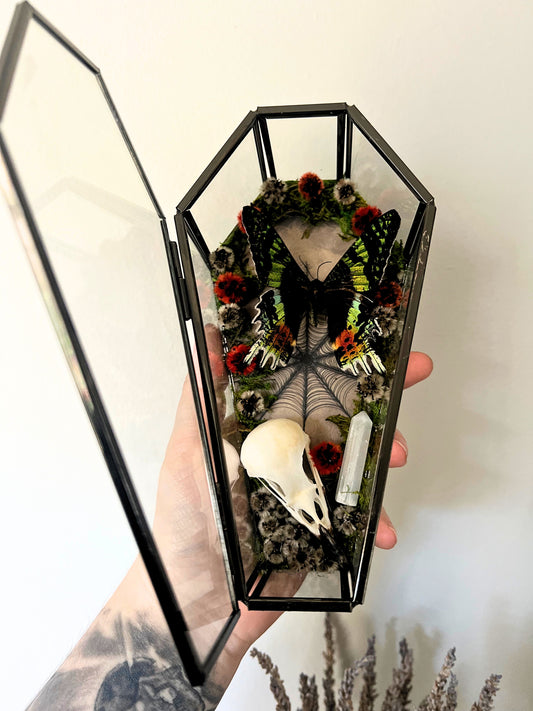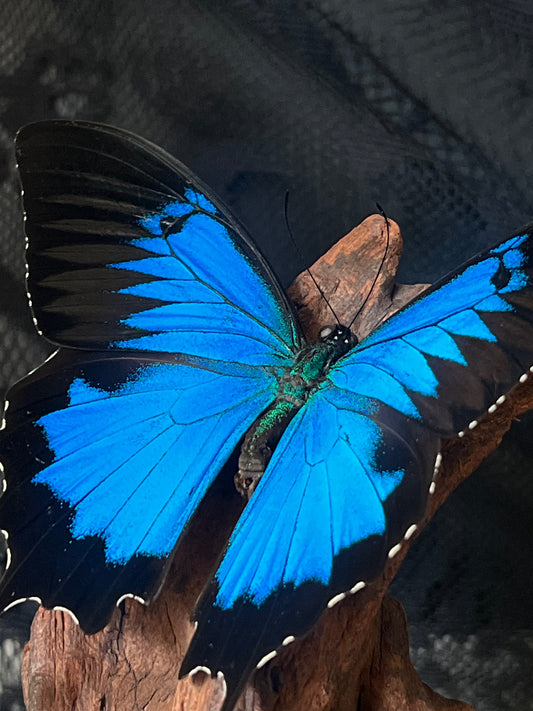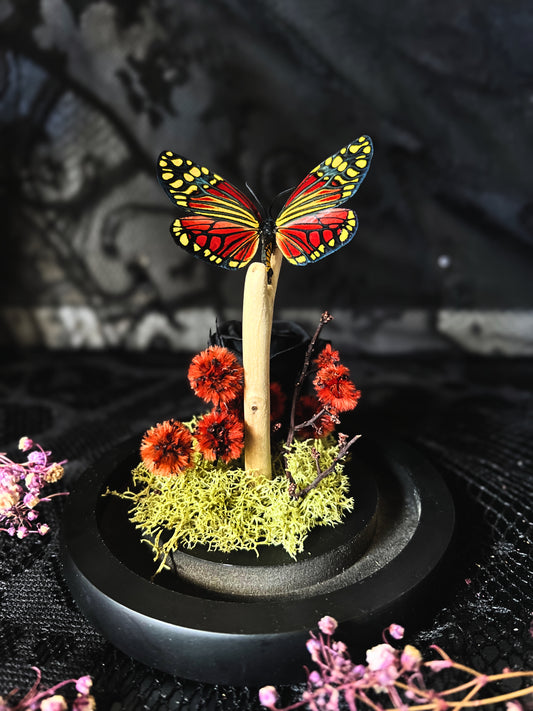
How to Care for Specimen Domes
Share
Specimen domes are a personal favourite of mine. So much so that I'm running out of room to display them all! They are beautiful art pieces and make for interesting conversations with guests when they notice it displayed on your coffee table for example. There is a bit of care involved in ensuring they always look their best which I'll be walking you through today.
How to Clean & Maintain Glass Specimen Domes
Glass domes and cloches are perfect for showcasing taxidermy, skulls, skeletons and insect art. You want to make sure when cleaning them that you are doing this safely and effectively.
Handle with care. When you purchase a glass dome from us, it will arrive to you with washi tape on the glass to secure it for transit. This is easily removable but keep in mind the domes are not sealed at the base. Always lift from the base, not the top, to avoid dropping your dome. You can seal the dome in place as this will help prevent pests from getting inside. If you do seal the base, just make sure you still pick up the dome from the base to avoid cracking and leaving fingerprints on the glass.
Display away from direct sunlight. This will ensure your specimen dome can retain its beautiful colours and stay in tip-top condition.
Keep it cool and dry. Avoid humidity like the plague. Humid environments encourage mold growth on your specimens and can also cause butterfly and moth wings to close up over time. Do not display your glass domes where moisture builds such as your bathroom, wardrobe, basement, attic or above any plants. Excessive heat can also cause damage, so do not display your specimen dome above or near a fireplace, otherwise, the glue your specimens are mounted on to can melt and deteriorate. If you can't avoid humidity where you live, we highly recommend setting up dehumidifiers.
Dust & vacuum weekly. Use a microfiber cloth or feather duster to clean the glass. Avoid paper towels - they can scratch. Regularly vacuuming around the area your dome is setup will help remove lint, hair and other food sources pests love as well.
Use the right cleaner. If the glass requires a deeper clean, carefully remove the glass top and gently wash with warm soapy water. Make sure to rinse off all soap suds and allow it to fully dry before placing the glass back over the dome.
💡 Diplay tip: Use LED lighting nearby to give your dome a glow without the UV.
General Preservation Tips for all Displays
Avoid touching. Oils from your fingers can and will leave fingerprints on the glass. Keep your hands off as much as you can, but if you do touch, quickly wipe it down so the oils from your fingers don't build up and make your specimen dome appear dirty.
Rotate your specimen domes. Rotating your specimen domes pieces occasionally can help with minimising exposure to light and environmental changes.
Keep away from pets and small children. They might mistakenly think you've brought home a new toy for them! Due to the nature of the preservation process, various chemicals are used to stop decomposition. Not only can they get injured if they knock over and shatter the glass, but if they also swallow any of the preserved specimens inside, this can cause them to become very sick and require urgent care.
Unpack ASAP when moving home. Please take care with unpacking your specimen domes as soon as possible and avoid storing them in wardrobes, attics, anywhere moisture can build up. This will help avoid insects infesting your pieces.
What to do if There are Signs of Infestation
If you follow our above advice and ensure your specimen domes are kept in a clean environment, it is unlikely you will have issues with infestations. However, it is still a good idea to check in on your specimen domes every now and then just in case - better to catch any issues early on!
Specs of dust, small black insect shells and shed fur are signs of infestation. Immediately bag or double bag your dome (to prevent freezer burn) and put inside your freezer for 2 weeks to kill off anything alive inside and unhatched eggs. Once removed, allow your dome to come back to room temperature naturally. Continue to monitor your specimen dome to ensure everything has been killed off. If there are signs not everything has been killed off, you can follow this process again.
For larger infestations, it may be necessary to fog the entire room. Use insecticidal products like bug bombs. Seal off the room where the item is located, set off the bug bomb and leave it undisturbed for 2 days at minimum.
Ensure you monitor the rest of your collection, as these pests may have gotten into other pieces. If so, follow the steps mentioned above.
Looking to add a specimen dome to your collection? Corvus Oddities has a wide range of specimen domes available to help you build your collection. Check out our range here!
If you have any questions, please feel free to contact us at hello@corvusoddities.com 🖤









